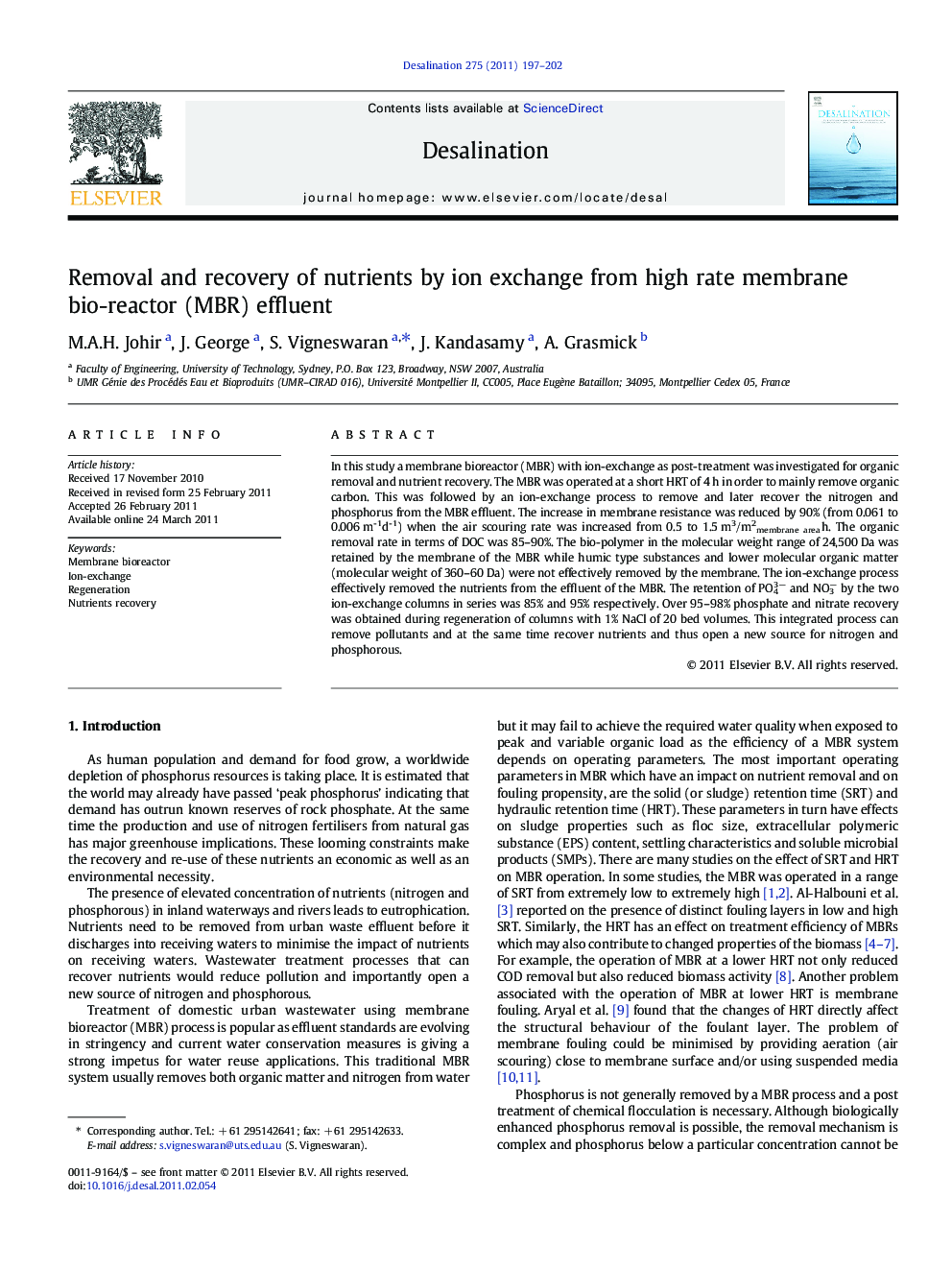| Article ID | Journal | Published Year | Pages | File Type |
|---|---|---|---|---|
| 625082 | Desalination | 2011 | 6 Pages |
In this study a membrane bioreactor (MBR) with ion-exchange as post-treatment was investigated for organic removal and nutrient recovery. The MBR was operated at a short HRT of 4 h in order to mainly remove organic carbon. This was followed by an ion-exchange process to remove and later recover the nitrogen and phosphorus from the MBR effluent. The increase in membrane resistance was reduced by 90% (from 0.061 to 0.006 m-1d-1) when the air scouring rate was increased from 0.5 to 1.5 m3/m2membrane area h. The organic removal rate in terms of DOC was 85–90%. The bio-polymer in the molecular weight range of 24,500 Da was retained by the membrane of the MBR while humic type substances and lower molecular organic matter (molecular weight of 360–60 Da) were not effectively removed by the membrane. The ion-exchange process effectively removed the nutrients from the effluent of the MBR. The retention of PO43− and NO3− by the two ion-exchange columns in series was 85% and 95% respectively. Over 95–98% phosphate and nitrate recovery was obtained during regeneration of columns with 1% NaCl of 20 bed volumes. This integrated process can remove pollutants and at the same time recover nutrients and thus open a new source for nitrogen and phosphorous.
Research Highlights► Membrane bio-reactor and ion-exchange for wastewater treatment and recycle. ► Two stage purolite ion exchange system for phosphate and nitrate recovery. ► High rate membrane bio-reactor with air scouring for organic removal.
